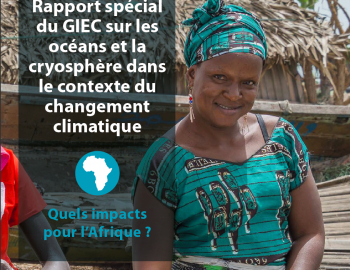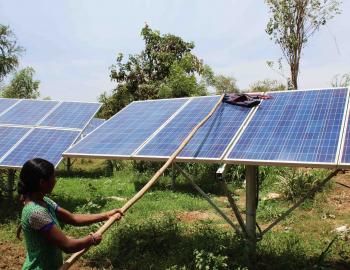INSIDE STORY: Nationally Appropriate Mitigation Action (NAMA) to accelerate geothermal power: Lessons from Kenya
INSIDE STORY: Nationally Appropriate Mitigation Action (NAMA) to accelerate geothermal power: Lessons from Kenya
This inside story, Nationally Appropriate Mitigation Action (NAMA) to accelerate geothermal power: Lessons from Kenya, looks at the Government of Kenya's ambitions to significantly expand its power supply from geothermal sources to underpin low-carbon, climate resilient development, as encapsulated in its national Climate Change Action Plan (NCCAP). Although progress has been made, greater private sector involvement is needed to keep the goal within reach. Kenya has developed a nationally Appropriate Mitigation Action (NAMA) to mobilise private investment by channelling targeted international climate finance and technical support. After introducing the context and objectives of Kenya’s geothermal NAMA, this brief focuses on the challenges faced in the process of developing the NAMA, and highlights lessons learned and recommendations for future NAMA development, both in Kenya and globally.
Geothermal power plants, which convert steam generated from hot rocks deep underground into electricity, have a prominent place in Kenya’s overarching development plans. These include the Vision 2030, the NCCAP, and the current ‘5000+ MW in 40 months initiative’. Geothermal power has the potential to provide reliable, cost-competitive, baseload power with a small carbon footprint, and reduces vulnerability to climate by diversifying power supply away from hydropower, which currently provides the majority of Kenya’s electricity. Kenya has set out ambitious targets for geothermal energy. It aims to expand its geothermal power production capacity to 5,000 MW by 2030, with a medium-term target of installing 1,887 MW by 2017. As of October 2014, Kenya has an installed geothermal capacity of approximately 340 MW. Although there is significant political will and ambition, reaching these ambitions is a major challenge.
Key messages
- Kenya has high ambitions for expanding geothermal power, and has produced a Nationally Appropriate Mitigation Action (NAMA) to increase the role of the private sector in accelerating its development.
- The NAMA is an important step in making the National Climate Change Action Plan (NCCAP) a reality on the ground.
- A sub-component of the NAMA was submitted to the NAMA Facility in July 2014, seeking funding to begin implementation.
- The development process had to overcome challenges, including raising awareness and obtaining buy-in of key stakeholders; securing financial partners; documenting and communicating the NAMA; and dealing with questions about ‘additionality’.
- Some of the lessons learned include the need for targeted, tailored communication on NAMA’s potential added value and linking the scope of the NAMA with the intended transformation of the entire sector.
Image credit: Ronald DiPippo



